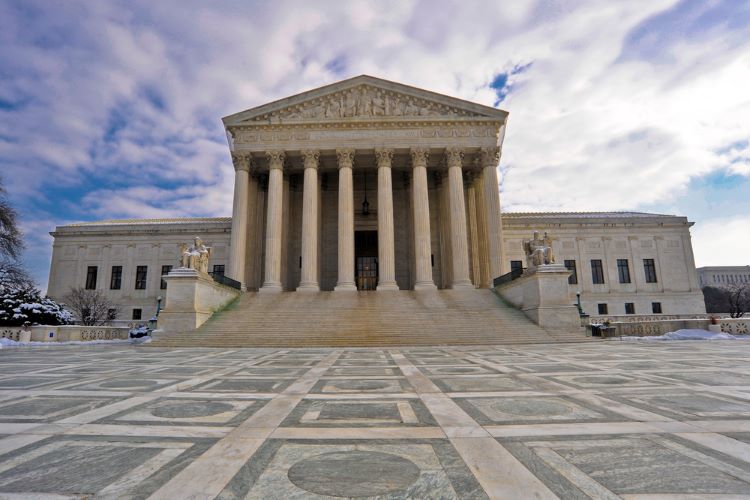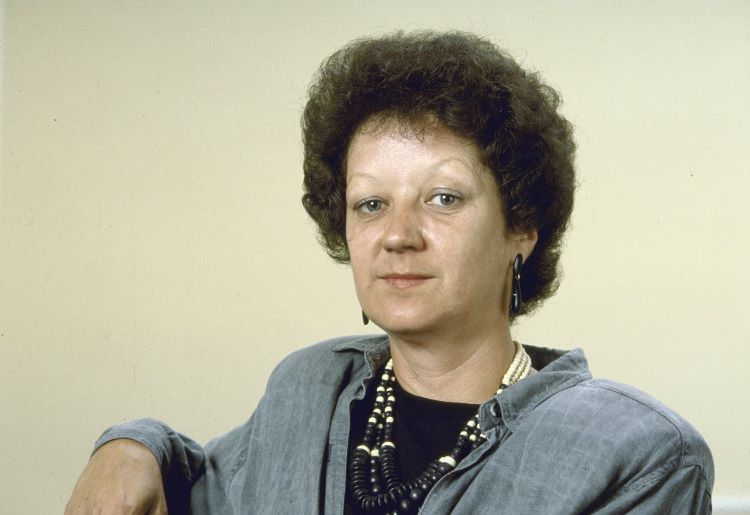Supreme Court nears end of term amid conflict and discord

Image from Shutterstock. Photo by Cynthia Johnson/Getty Images.
The headlines paint a distressing picture for the U.S. Supreme Court as it approaches the end of this most unusual term.
“Chaos in John Roberts’s Court,” said a June 2 article on the website of Vanity Fair magazine, by the novelist and lawyer Scott Turow, referring to the U.S. chief justice.
A USA Today headline on June 7 said, “Chief Justice John Roberts facing test of leadership amid tense time at Supreme Court.”
“Discord at Supreme Court mirrors diminishment of democratic norms,” said a story on CNN’s website on June 13.
And on June 17, the front page of the Washington Post said, “Since draft opinion leak, controversies continue piling up for justices.”
 Related article from ABAJournal.com: “What does the original Roe v. Wade really say?”
Related article from ABAJournal.com: “What does the original Roe v. Wade really say?”
For anyone who hasn’t been paying attention, the leak was of a draft opinion in a pending case that would overrule Roe v. Wade, the court’s landmark 1973 decision establishing a woman’s right to abortion. In a term loaded with hot-button cases on reproductive rights, guns, religion and the environment, the May 2 revelation of the draft majority opinion in Dobbs v. Jackson Women’s Health Organization by the journal Politico ratcheted up scrutiny of the high court and brought a raft of repercussions as the justices hurtle toward the targeted end of their term by June 30.
“What we have now is kind of a perfect storm,” says Stefanie Lindquist, a professor of law and political science at the Sandra Day O’Connor College of Law at Arizona State University. “The court is sort of rattled by all the political instability that we’re all experiencing writ large.”
A growing list of unusual challenges
The controversies and challenges roiling around the court include these:
Leak investigation: The marshal of the court, Col. Gail A. Curley, is conducting the investigation of the leak of the Dobbs draft. There are numerous theories circulating about who might have leaked the document, marked as a “1st Draft” and dated Feb. 10. In late May, CNN reported that law clerks of the justices were asked to reveal their phone records and sign affidavits. Some clerks were so alarmed that they were exploring whether to hire legal counsel, CNN said. There has been little disclosed—or leaked—about the progress or status of the investigation since then.
Protests and threats: The leak prompted raucous demonstrations at the court building and outside the homes of several justices. Congress debated increased police protection for the family members of justices, a measure that was pushed over the finish line after a man with a gun, a knife, pepper spray and burglary tools was arrested outside the home of Justice Brett Kavanaugh. The California man has been charged with attempted murder.
Virginia Thomas: There has been a steady drumbeat of allegations and revelations regarding the wife of Justice Clarence Thomas and her role in advancing theories that the 2020 presidential election was fraudulent. They include messages Virginia Thomas exchanged with then-White House Chief of Staff Mark Meadows about election fraud, and email correspondence between her and lawyer John Eastman, who sought to urge then-Vice President Mike Pence to block the certification of Joe Biden as the election winner. Thomas has said that she and her husband stay in their own professional lanes and do not discuss each other’s work. Activists have called on Justice Thomas, who would have granted former President Donald Trump’s request to block White House records, to recuse himself from further cases stemming from the 2020 election.
Internal strains: Justice Thomas offered a much-dissected take on the state of the court when he addressed a conservative policy conference in Dallas last month. Thomas said the leak of the Dobbs draft opinion had turned the court into someplace “where you look over your shoulder.” Thomas referred to the period from 1994 until Chief Justice William H. Rehnquist’s death in 2005, when there were no changes in the court’s makeup, as time when the justices acted as “a family.”
“We actually trusted each other. We may have been a dysfunctional family, but we were a family, and we loved it,” Thomas said at the May 13 conference led by the American Enterprise Institute. The comment was interpreted by some as a jab at Roberts, who succeeded Rehnquist that year.
Legal tensions: As the court reconsiders precedents not just in the highly charged area of abortion rights but in more routine contexts, the court’s liberal minority is expressing its dismay. In a partial dissent to a June 8 decision that declined to extend a 1971 precedent authorizing constitutional claims against federal agents, Justice Sonia Sotomayor, joined by Justices Stephen G. Breyer and Elena Kagan, referred to “a restless and newly constituted court” that sees fit “to foreclose remedies in yet more cases.”
On June 21, in a separate dissent to a decision that struck down Maine’s exclusion of religious schools from a state tuition-aid program, Sotomayor wrote, “With growing concern for where this court will lead us next, I respectfully dissent.”
While political winds swirl, opinions are starting to flow
Aziz Z. Huq, a law professor at the University of Chicago, says that a confluence of trends and unusual occurrences has led to this fraught time for the court.
“One is that the law is being changed dramatically,” Huq says, referring to the possible overruling of Roe and other shifts by the conservative-dominated court. “A change in substantive law when it comes to constitutional rights is very hard to disentangle from the changing composition of the court and the influence that presidents have through their selection of justices.”
Huq, a scholar of U.S. and comparative constitutional law and a former law clerk to Justice Ruth Bader Ginsburg, says that despite the justices’ frequent assertions that they are not politicians in robes, “the court is an entity that is porous to politics.”
“I think that the kinds of stress the court is under are a consequence of our partisan, polarized culture but also a culture in which partisan differences are being staged in violent forms,” he said.
William M. Jay, a partner and head of Supreme Court and appellate litigation at Goodwin Procter LLP, says the relatively small and connected world of regular high court litigators isn’t quite sure what to make of the confluence of controversies hitting the court this spring.
“They seem to be getting their work done, which is good,” says Jay. In fact, a large number of outstanding cases at the beginning of June further fueled the view that the court was perhaps paralyzed by the various crises. But in the past two weeks, the court has been churning out opinions at a rapid clip, and it now appears the justices could finish the term by July 1.
Jay, who clerked for Justice Antonin Scalia, says that assuming it isn’t a justice who is identified as the leaker of the Dobbs draft, and further assuming no more leaks, then the most important factor for restoring a sense of normalcy will be how the justices and the small number of permanent staff members interact with each other.
“That’s even if they never find the leaker,” he says. “Some of the court’s youngest justices might serve 40 years with each other.”
Referring to a phrase the court frequently uses, Jay says, “There has always been a high degree of trust that they are pursuing their ‘common calling’ in good faith.”
Hoping to restore sense that ‘we … have not lost our way’
While Sotomayor has, in opinions, used some barbed language recently, she made a splash last week with a public appearance that reflected an upbeat outlook on the court and relationships among the justices.
“We have to have continuing faith in the court system and our system of government,” Sotomayor said in a June 16 conversation before the American Constitution Society, an organization of progressive lawyers and law students.
She said she hoped “to regain the public’s confidence that we—as a court, as an institution—have not lost our way.”
She did not address the leak or other controversies specifically, but she singled out one of her colleagues—Thomas—for praise.
“He is a man who cares deeply about the court as an institution,” Sotomayor said, noting that Thomas is known for greeting and knowing the names of court employees at every level.
“I suspect I have probably disagreed with him more than with any other justice,” said Sotomayor, who is perhaps as liberal as Thomas is conservative. “He has a different vision than I do about how to help people and about their responsibilities to help themselves. Justice Thomas believes that every person can pull themselves up by their bootstraps. I believe that some people can’t get to their bootstraps without help.
“That’s a very different philosophy of life, but I think we share a common understanding about people and kindness towards them,” Sotomayor added. “That’s why I can be friends with him and still continue our daily battle over our difference of opinions in cases.”



